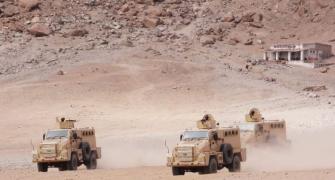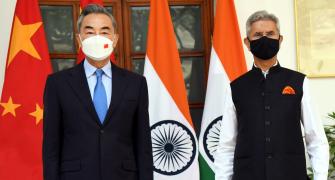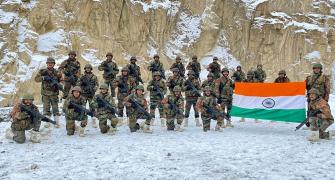India on Friday said the situation in eastern Ladakh has not returned to the stage of full normalcy as some steps are yet to be taken for it.

The comments of Ministry of External Affairs spokesperson Arindam Bagchi came days after Chinese envoy Sun Weidong claimed that the situation in eastern Ladakh is "overall stable" as the two sides have moved from the "emergency response" that followed the Galwan valley clashes in June 2020 to "normalised" management.
"Some steps are required for full normalcy, we have not reached there," Bagchi said when asked about the Chinese ambassador's remarks.
The MEA spokesperson said India has been maintaining that it expects disengagement followed by de-escalation for the return of normalcy on the border, which could pave the way for normal ties between the two neighbouring countries.
"We have not reached there.... I would not like to say that the situation is normal. There have been some positive steps, but some steps are yet to be taken," he said.
Bagchi also referred to External Affairs Minister S Jaishankar's remarks last month that the disengagement at Patrolling Point 15 in eastern Ladakh was "one problem less" on the border.
Indian Air Force chief Air Chief Marshal V R Chaudhari on Tuesday said the benchmark for the situation to become normal in eastern Ladakh would be to return to status quo ante prior to the standoff and a complete withdrawal of troops from all friction points.
Though the two sides have disengaged from Patrolling Point 15 (PP-15), there has been no progress yet on resolving the standoff in the Demchok and Depsang regions.
Following the eastern Ladakh standoff, India has been consistently maintaining that peace along the Line of Actual Control is key for the overall development of its ties with China and the state of the border will determine the state of the bilateral relationship.
The eastern Ladakh border standoff erupted on May 5, 2020, following a violent clash in the Pangong lake areas.
Both sides gradually enhanced their deployment by rushing in tens of thousands of soldiers and heavy weaponry.
As a result of a series of military and diplomatic talks, the two sides completed the disengagement process last year on the north and south banks of the Pangong lake and in the Gogra area.
The disengagement in the Pangong lake area took place in February last year, while the withdrawal of troops and equipment from Patrolling Point 17(A) in Gogra took place in August last year.










